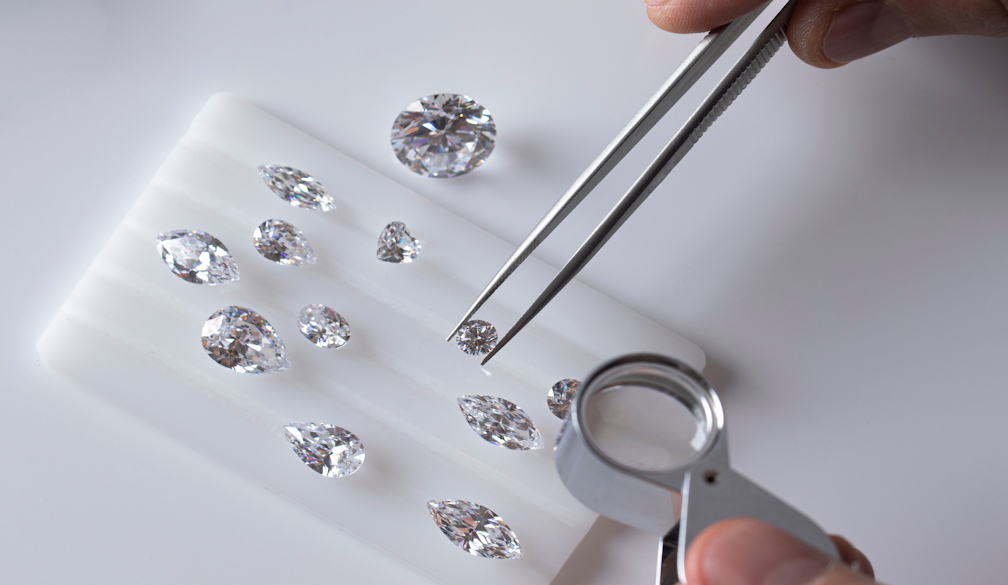The Rise of Lab Grown Diamonds in the Jewellery Industry

The jewellery industry has been historically synonymous with luxury, exclusivity, and tradition. For centuries, natural diamonds, mined from deep within the Earth, have been the symbol of enduring love, sophistication, and opulence. However, as the world evolves, so do our values and priorities. In the ever-evolving landscape of luxury jewellery, lab grown diamonds, often referred to as lab diamonds, have emerged as a transformative force.
Understanding Lab Grown Diamonds
Lab grown diamonds, as the name suggests, are diamonds created in controlled laboratory environments, departing from the centuries-old practice of extracting diamonds from the Earth's depths. These lab grown gems possess the same physical, chemical, and optical characteristics as natural diamonds, rendering them virtually indistinguishable to the naked eye.
The Science Behind Lab Diamonds
Creating lab diamonds involves replicating the natural process of diamond formation. Two primary methods are employed to achieve this:
- High Pressure High Temperature (HPHT): In the HPHT method, a tiny diamond seed is placed in a carbon-rich environment, where it undergoes extreme heat and pressure conditions. This causes the carbon to crystallize around the seed, forming a larger diamond. Remarkably, this process mimics the way natural diamonds are created.
- Chemical Vapor Deposition (CVD): In the CVD method, a thin slice of diamond seed is positioned in a chamber filled with a carbon-rich gas. As the gas is heated, carbon atoms adhere to the seed, layer by layer, over time, eventually forming a diamond. This approach allows for meticulous control over the diamond's size and quality.
Why Choose Lab Grown Diamonds
The allure of lab grown diamonds extends far beyond their remarkable physical properties. Here are some compelling reasons why consumers are increasingly turning to these diamonds:
- Ethical and Sustainable: Lab grown diamonds are an ethical choice. Unlike their mined counterparts, which have been associated with harmful environmental practices and ethical concerns, lab grown diamonds are conflict-free and have a significantly smaller carbon footprint.
- Transparency and Traceability: Lab grown diamond producers prioritize transparency, offering consumers detailed information about the origin and production process of their diamonds. This transparency empowers consumers to make informed choices.
- Cost-Effective: Lab grown diamonds tend to be more affordable than natural diamonds. The controlled production process reduces price volatility, making them accessible to a wider range of consumers.
- Quality and Purity: Lab grown diamonds often exhibit fewer impurities than natural diamonds, resulting in exceptional clarity and brilliance. The controlled environment ensures a high level of quality.
- Customization: Lab grown diamonds can be tailored to meet specific preferences in terms of size, shape, and quality. This level of customization allows consumers to create unique and personalized jewellery pieces.
- Innovation and Technology: Opting for lab grown diamonds supports ongoing research and development in diamond synthesis. As technology advances, the quality and affordability of lab grown diamonds are expected to improve further.
The Growing Popularity of Lab Diamonds
The increasing popularity of lab grown diamonds can be attributed to a combination of factors:
- Ethical Awareness: Modern consumers are more conscientious about the ethical and environmental implications of their purchases. Lab grown diamonds, with their conflict-free and sustainable origins, align seamlessly with these values.
- Cost-Effective Luxury: Lab grown diamonds offer an attractive alternative for those who desire the brilliance and luxury of diamonds without the steep price tag.
- Customization: The ability to customize lab grown diamonds to meet specific preferences is a significant draw for consumers seeking to craft unique, one-of-a-kind jewellery pieces.
- Influencer Endorsement: Prominent celebrities and influencers have played a pivotal role in promoting lab grown diamonds, elevating their visibility and appeal.
Challenges and Considerations
While lab grown diamonds offer numerous advantages, it's crucial to acknowledge some of the challenges and potential considerations:
- Market Perception: Despite their many merits, some consumers still harbor misconceptions about lab grown diamonds, viewing them as inferior or "fake." Ongoing education and awareness campaigns are essential to dispel these myths.
- Price Variability: The price of lab grown diamonds can fluctuate depending on factors such as size, quality, and customization. Consumers should be prepared for price variations based on their preferences.
- Energy Consumption: The production of lab grown diamonds does require a significant amount of energy. Although it is generally more energy-efficient than mining natural diamonds, efforts to further enhance energy efficiency are ongoing.
Lab grown diamonds, often referred to as lab diamonds, represent a remarkable innovation in the jewellery industry. They offer consumers an ethical, sustainable, and customizable choice for their jewellery needs. These diamonds, while dazzling with beauty, also shine brightly with values and principles that resonate with an increasingly environmentally and ethically conscious generation of consumers.
As awareness continues to grow, lab diamonds are poised to become an even more prominent feature of the fine jewellery landscape. They offer a sparkling future that aligns seamlessly with the evolving preferences of those who seek not only elegance and brilliance but also ethical and sustainable luxury. With their compelling attributes and bright prospects, lab grown diamonds are indeed the future of sparkling elegance.























